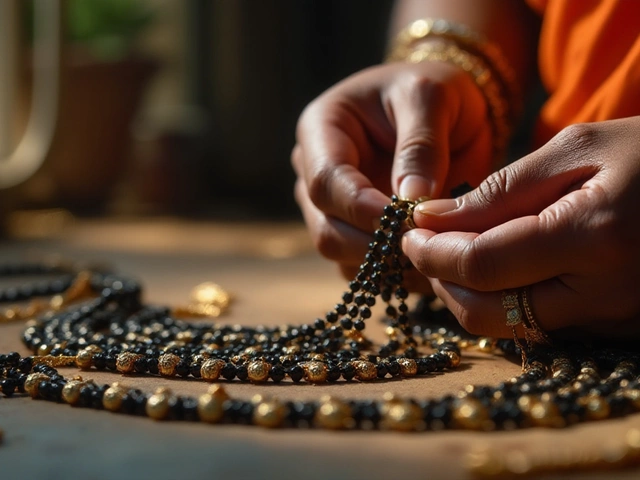Sacred Duty: What It Is and Why It Counts
When someone mentions "sacred duty" in India, they’re talking about a deep‑rooted sense of responsibility that ties family, faith and community together. It isn’t just a phrase – it’s a way of life that shows up in everything from jewelry customs to daily habits.
Roots in Religion and Family
Most Indian religions, whether Hinduism, Sikhism or Jainism, teach that we have duties to gods, parents and society. These duties often get called "sacred" because they’re believed to keep cosmic balance. For example, wearing a mangalsutra after marriage is seen as a promise to uphold marital vows – a tiny gold chain that carries huge meaning.
Everyday Actions that Reflect Sacred Duty
It’s not only big rituals. Simple acts like keeping a clean home for guests, sharing food during festivals, or even taking care of an elderly relative count as sacred duties. They reinforce respect, gratitude and the idea that personal actions affect the larger whole.
Take black beads in a mangalsutra. While they look fashionable, they also symbolize protection and the weight of a marital promise. The same goes for black bangles – wearing them can signal mourning, strength, or a pledge to uphold cultural values.
Even something as casual as choosing the right fabric for a festival ties into duty. Selecting breathable cotton for a hot summer wedding shows respect for guests’ comfort and honors the event’s spirit.
People often test jewelry authenticity (gold, silver, gemstones) not just for value but to ensure their sacred items truly represent the promised quality. Knowing how to spot cheap pieces helps protect both the financial and symbolic worth of the item.
In modern times, many wonder if they must follow every tradition. The answer isn’t a simple yes or no. Sacred duty evolves – you can keep the core intent while adapting practices to today’s world. Skipping a ritual doesn’t mean you abandon responsibility; it might just mean you’re finding a new way to honor it.
So whether you’re picking a nose stud, deciding when to buy gold, or figuring out how to start a home jewelry business, think about the deeper duty behind each choice. It’s the thread that links personal decisions to a larger cultural tapestry.
Understanding sacred duty helps you respect tradition, make informed choices and feel connected to something bigger than yourself. Keep this mindset, and everyday actions become more meaningful, not just for you but for the whole community.
Kirpan: A Sacred Duty Beyond the Sword
The Kirpan is an essential symbol in Sikhism, representing more than just a mere sword. It's a manifestation of faith, courage, and the duty to stand against injustice. This article explores its roots, contemporary relevance, and the sense of identity it provides to its bearers. Discover the profound meaning and responsibilities tied to this sacred article of faith.
Kirpan: A Sacred Duty Beyond a Sword
The Kirpan is more than just a sword; it represents a critical aspect of Sikh faith and tradition. Worn as one of the 'Five Ks,' it symbolizes the wearer's duty to protect and uphold justice. This article delves into its historical roots, religious significance, and the responsibilities that come with carrying a Kirpan. Discover why this weapon is an essential part of Sikh identity, transcending its physical form to embody a moral and spiritual commitment.






